WE KNOW WHAT VR LOOKS LIKE
click to continue
The Virtual Nervous System extends the senses, exploring what digital experiences might feel like within VR. Using a network of wearable haptic sensors, the project immerses participants into a series of investigative scenes that trigger choreographed vibratory sensations. The Virtual Nervous System imagines what it might feel like to walk through digital grass, stand in a rising water mesh surface, and be caught in a windstorm simulation. The project then utilizes these newly defined senses, such as the ‘third eye’, to create more abstract scenes and interactions that activate these new body parts.
Created at ArtCenter College of Design's immersion lab


THE EXPERIENCES


Rising Water
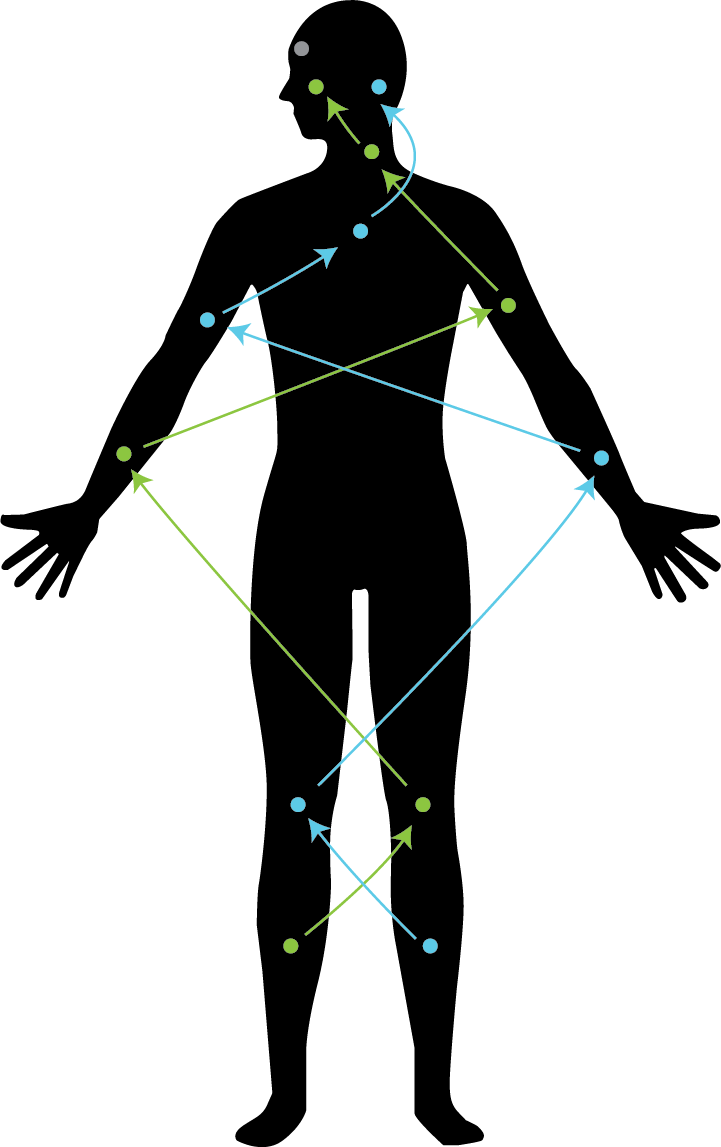
Inspired by the natural flow of water, the haptics turn on from side to side up the body to create a wave like sensation.
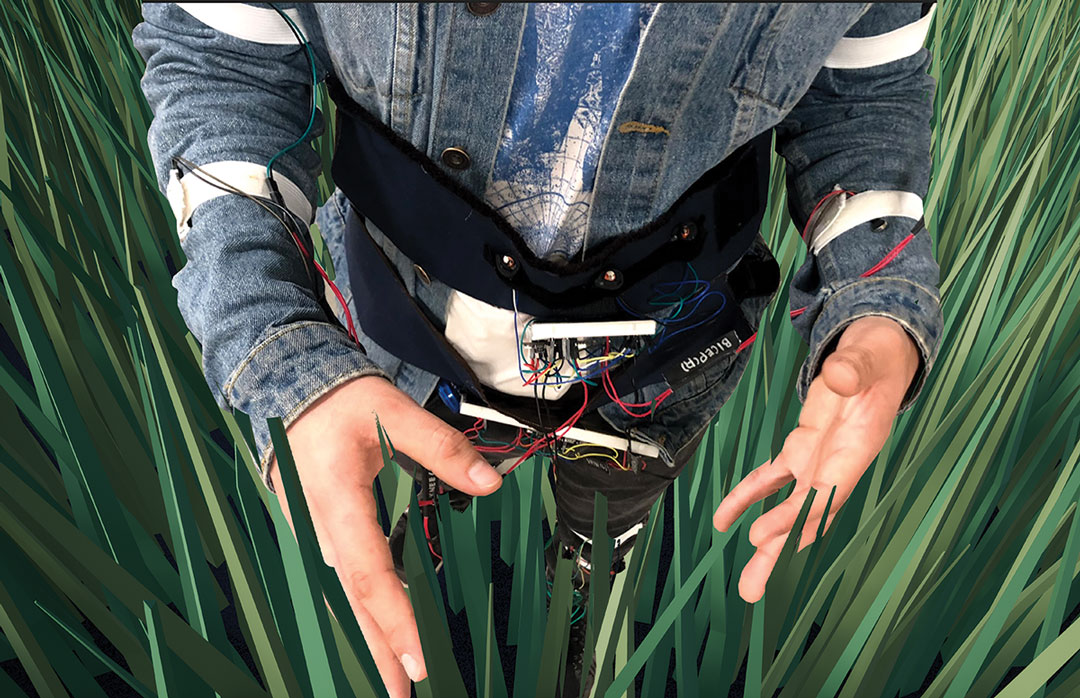
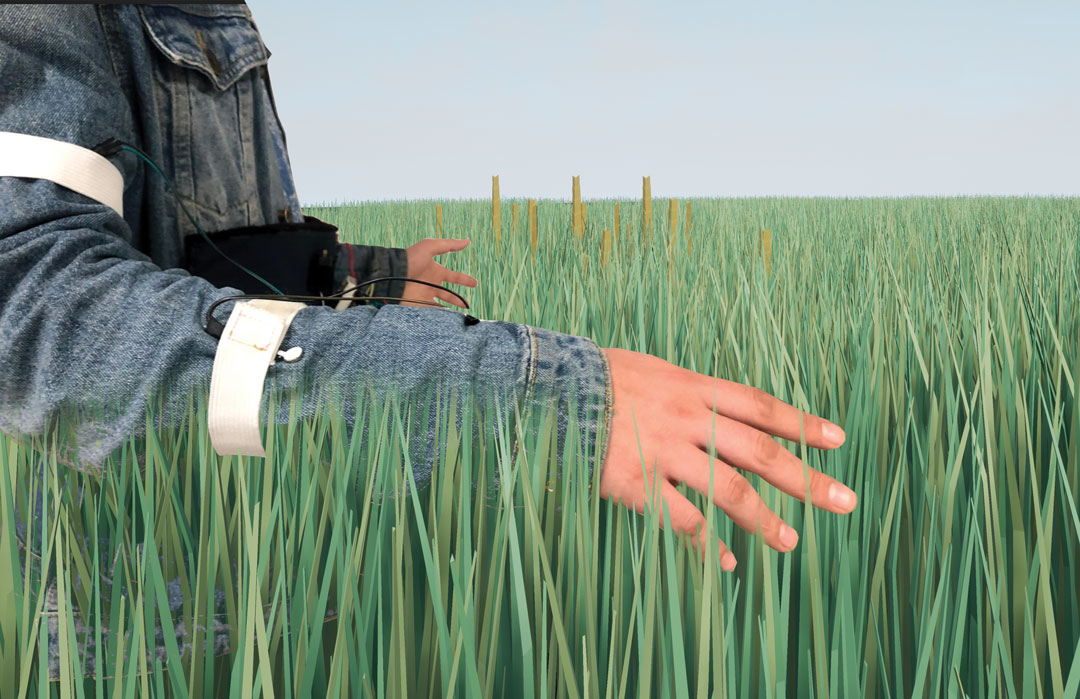
Walking Through Grass
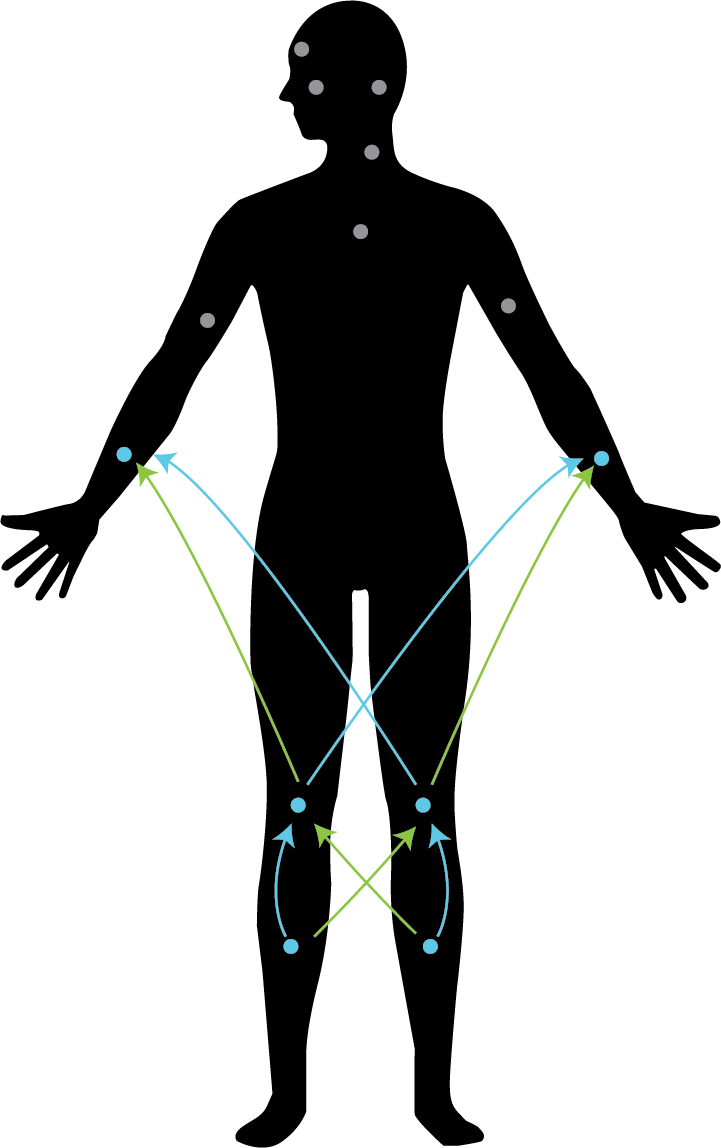
Grass grows from the bottom up so for this experience the user feels the grass rise up their leg and land on their lower arm on the opposite side.
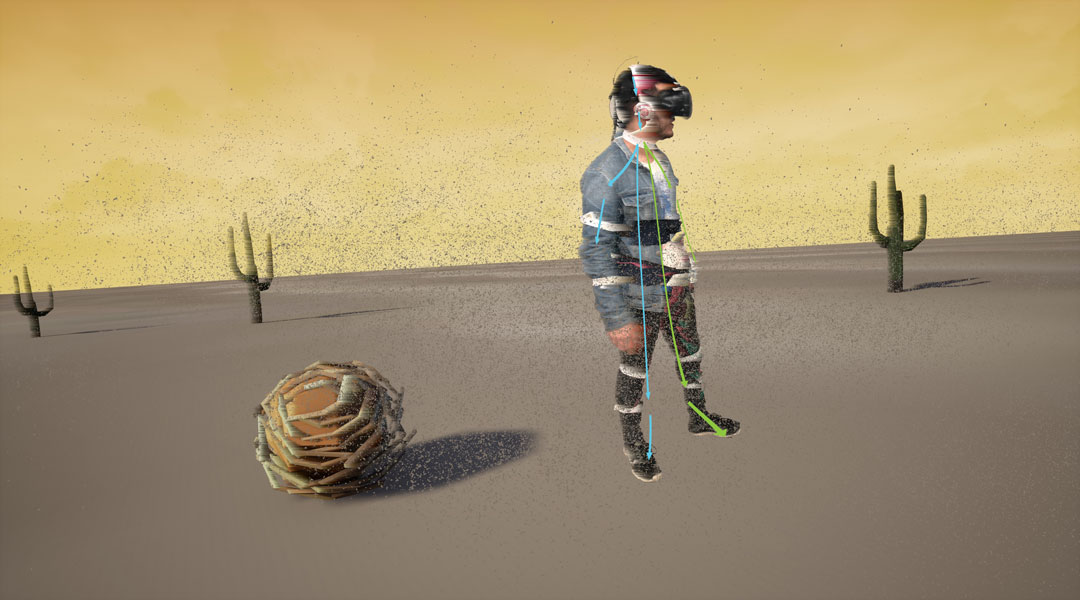
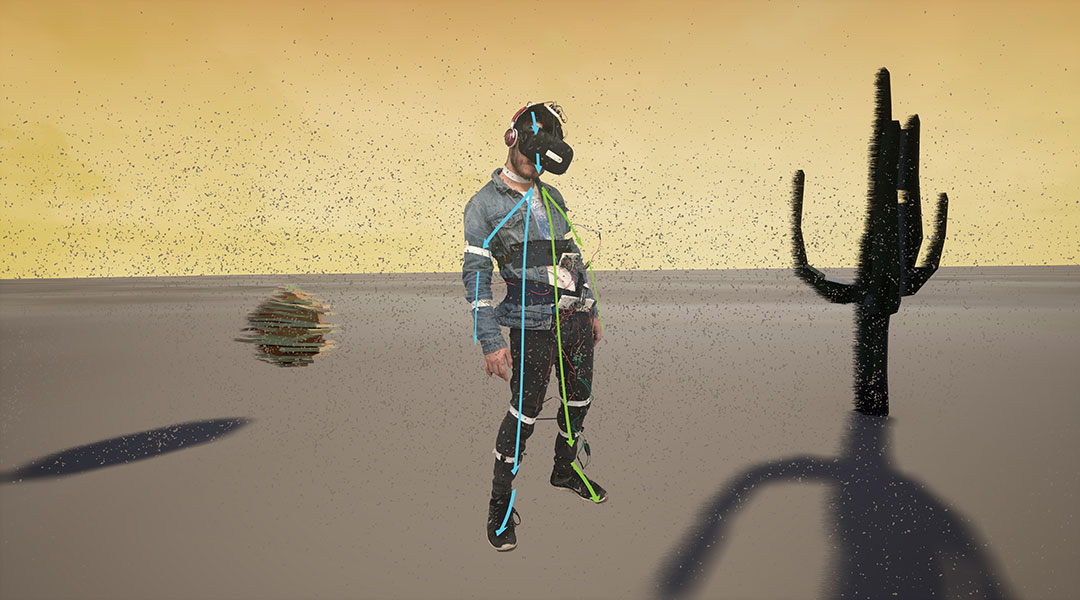
Windy Desert
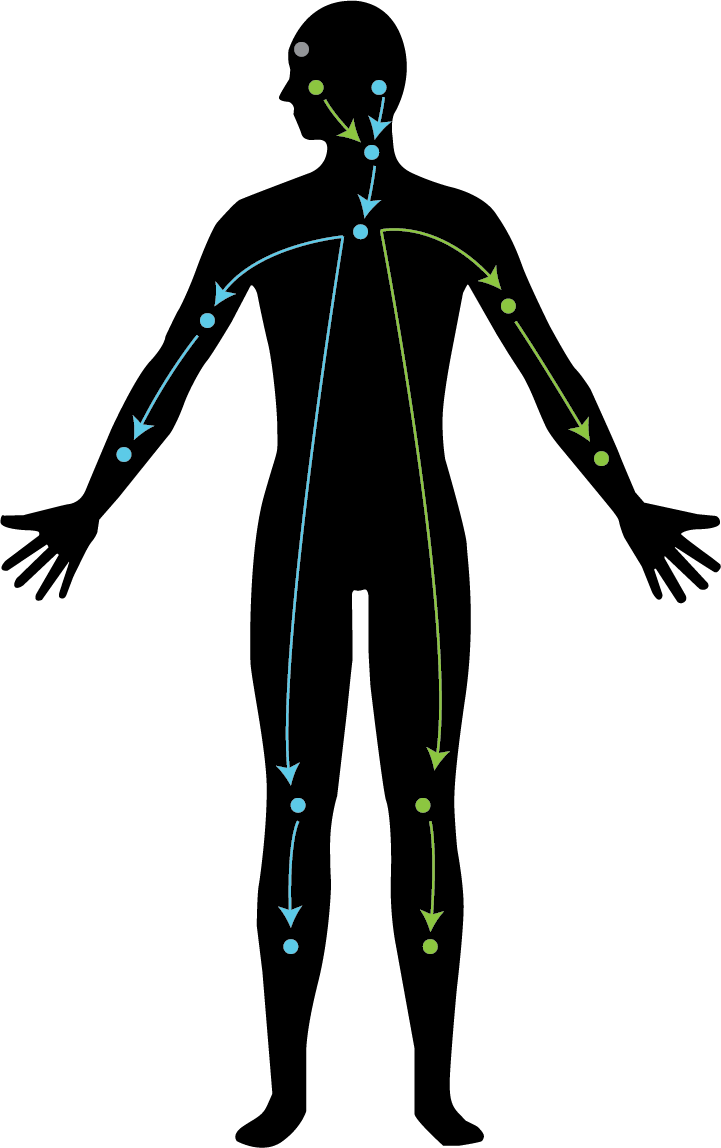
The wind experience has the user feel the wind from their head and expand downward throughout their entire body.
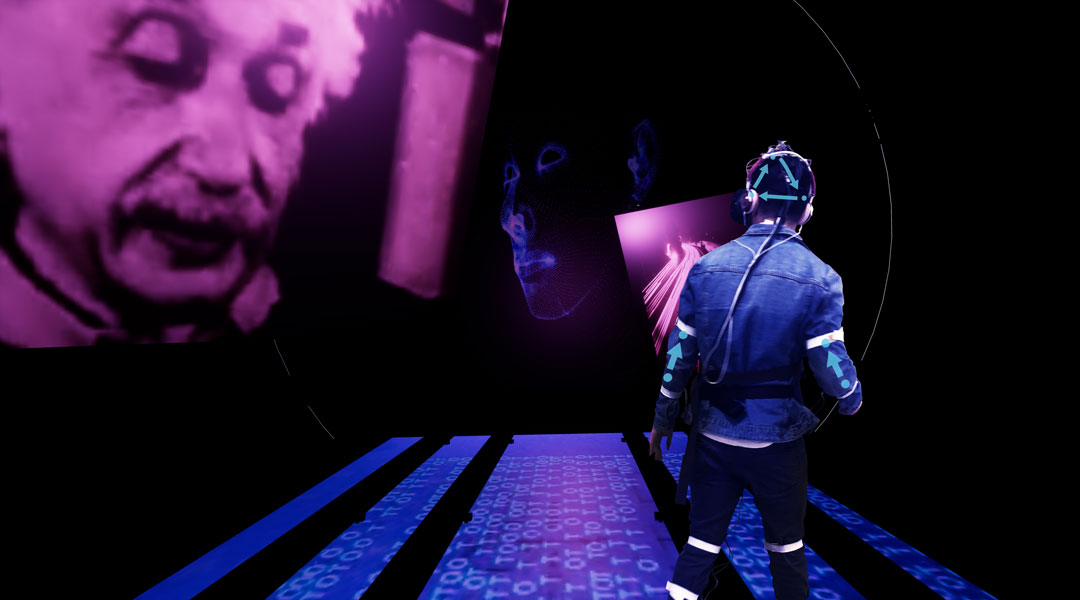
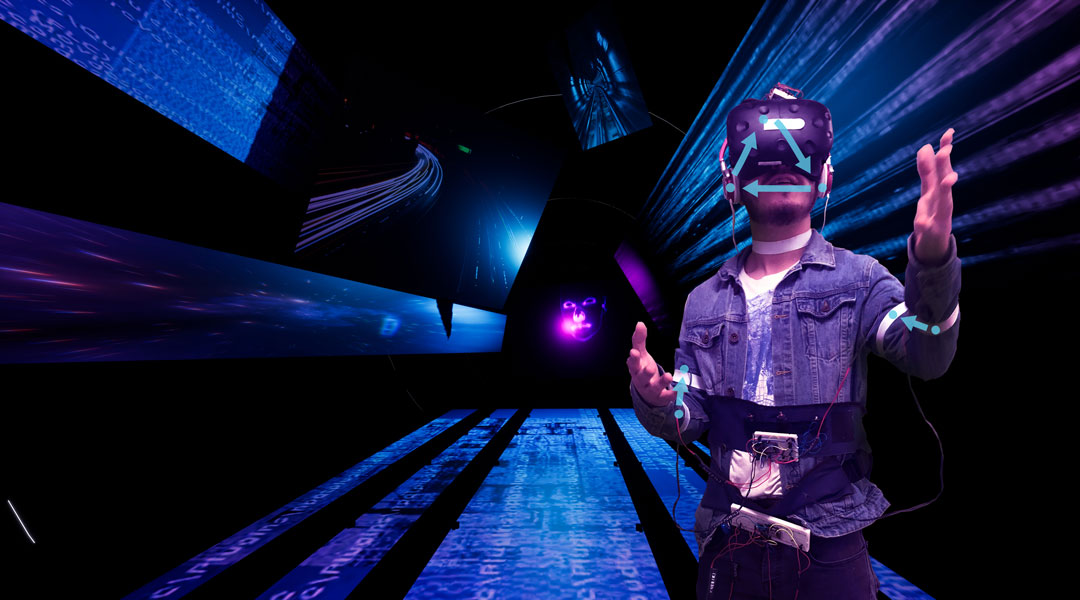
Out of Body Experience

This experience is unique because we let the technology dictate the sensation the user feels. We started with the idea of enlightenment through a third eye and along with the left and right ear haptic sensations it creates a triangle within the user’s skull with the third eye as the apex. And rising sensations up the arm that only support the importance of the head sensations.
HOW WE GOT HERE
We started with a number of different explorations developing VR experiences with the HTC Vive as well as Motion Capture techniques. We were mostly interested in providing feedback to the user with an experience.



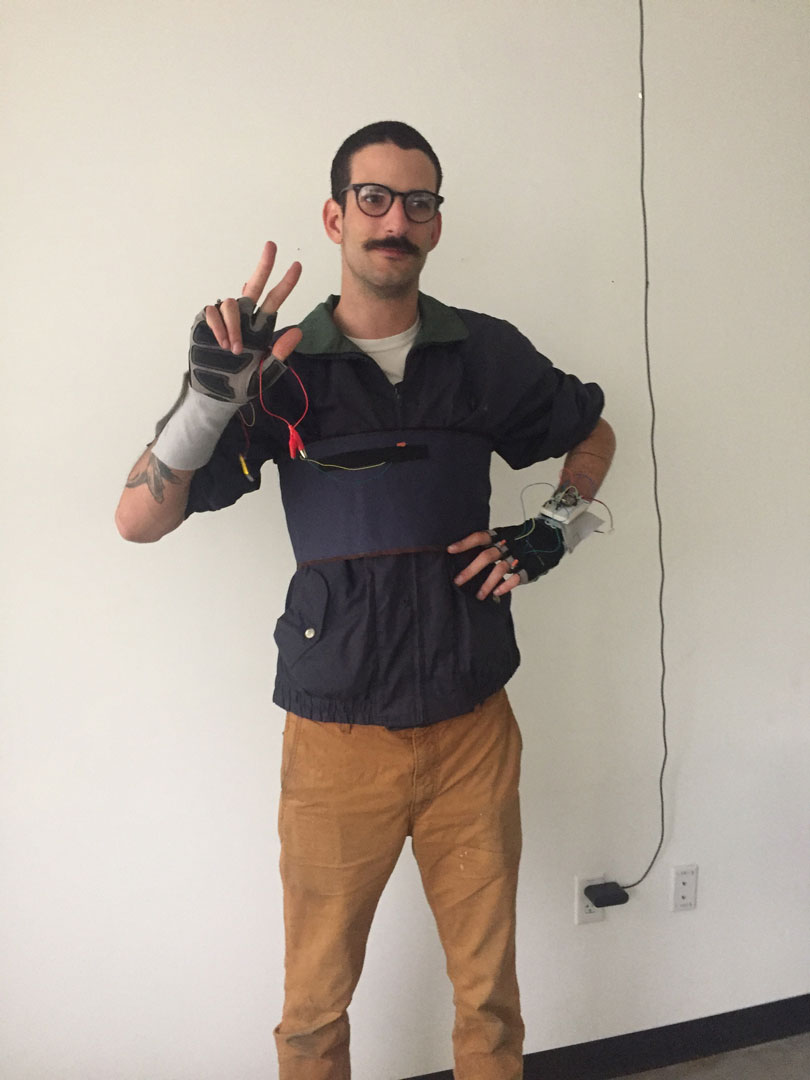


We started the development of the physical suit focusing initially on the hands and on the chest. We found that this first concept felt really limiting for a interactive experience. This is also when we decided more on what our visual scenarios were going to be about. Rather than a linear narrative we wanted to focus on how a series of spaces would feel like virtually.
User Feedback
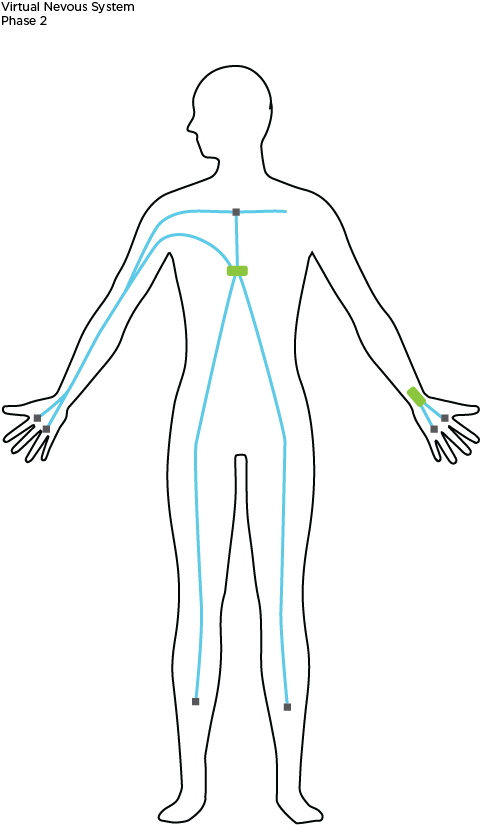
In the second round we added haptics on the shin to expand the experience to become more of a full body experience. The user feedback really encouraged this direction for us, so we went back to the drawing board using the biological nervous system as reference. We would look for places where there not as many end nerves and people have less associations for and began a suit for those points.

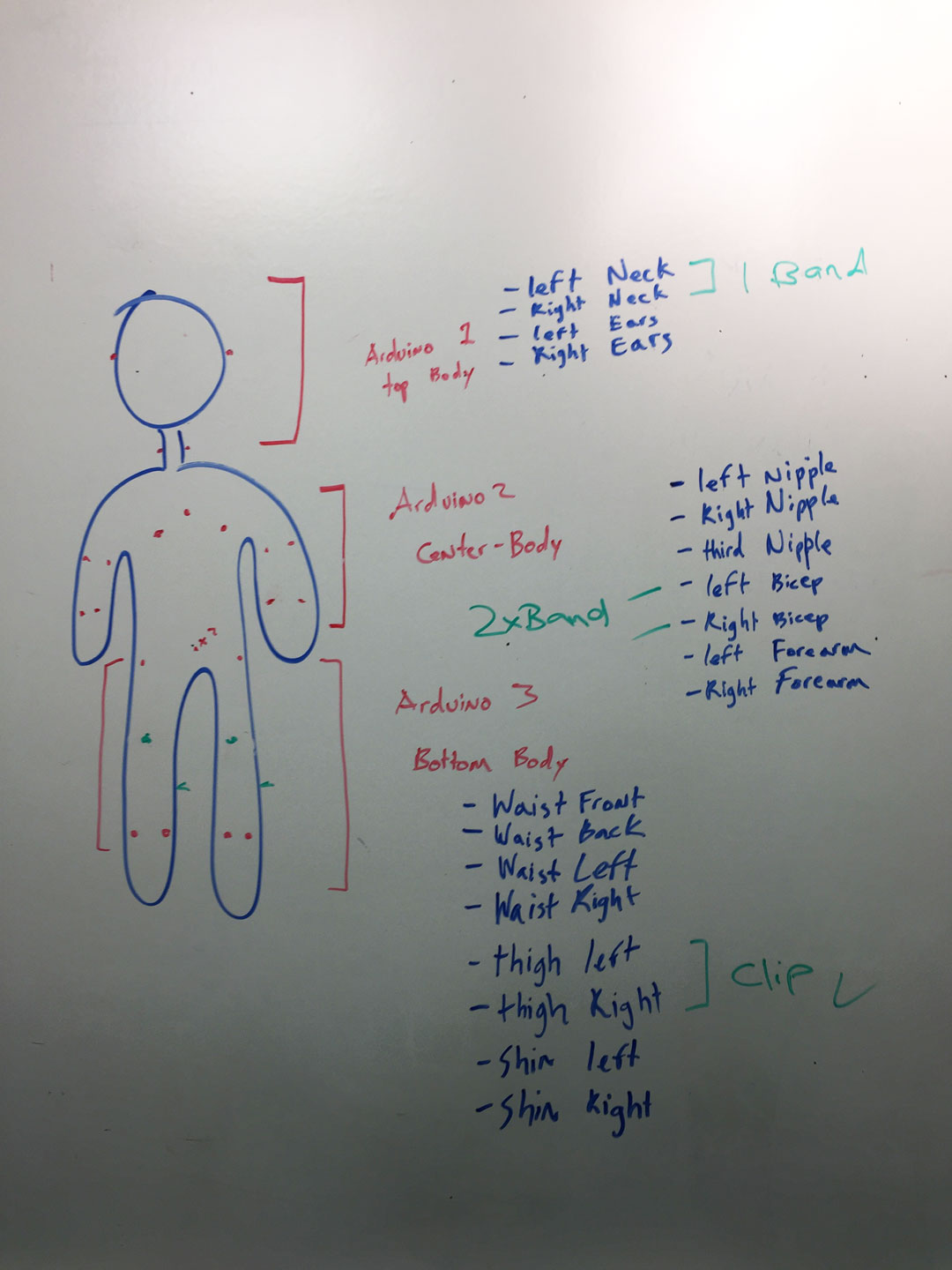
User Testing
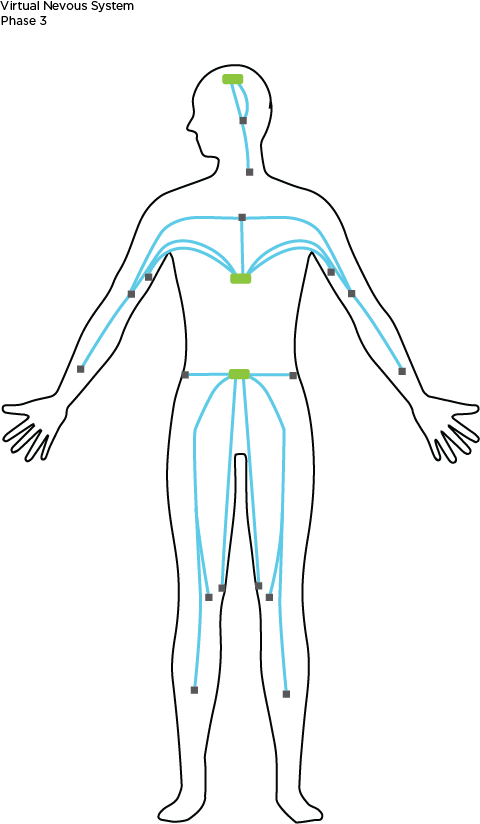
At this point we had our third version of the suit and conducted usability testing. Testing revealed to us that we may have gone too far with the number of haptics and some of them just became overkill. Also the user understood the idea we were trying to create but the haptic design was not refined enough for him to disassociate the idea of having motors on his body.
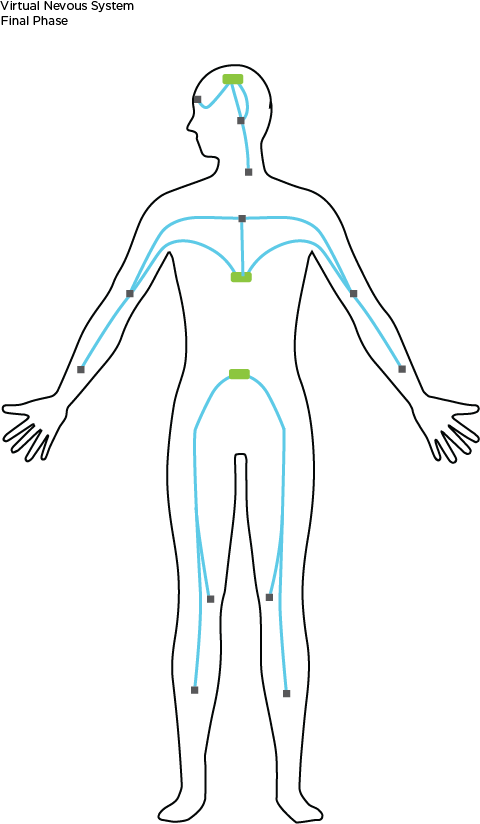


We refined the suit to include only the necessary haptics. Focusing mostly on the feedback design we went through a series of explorations on how they could act referencing nature, cartoons, and anything we could think of. We would then program and test our favorites to see which complimented the experience best.